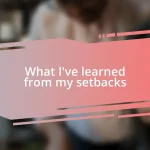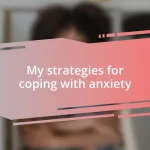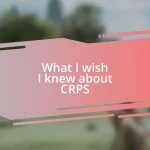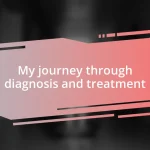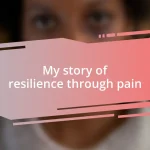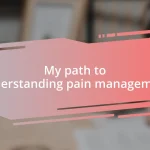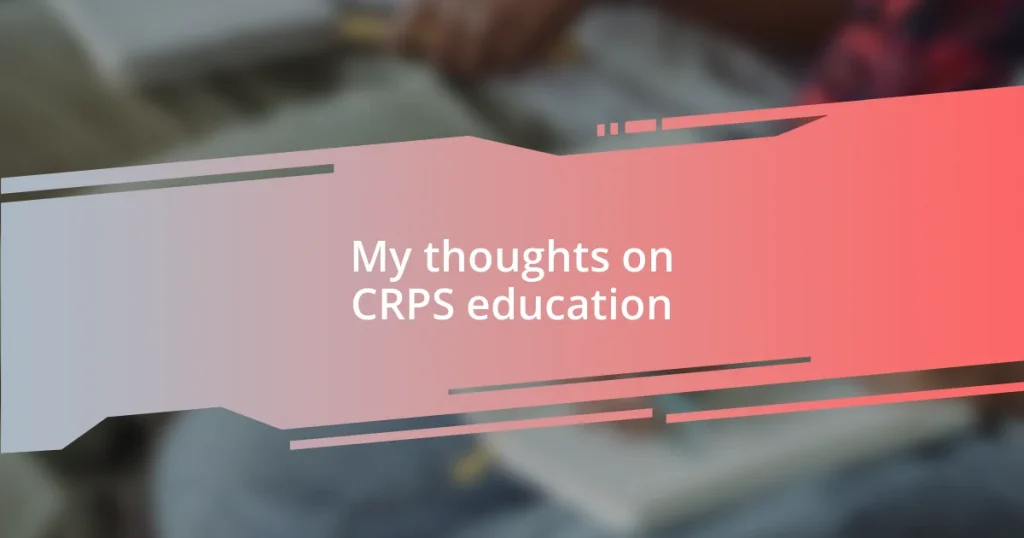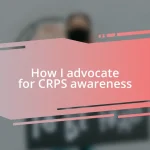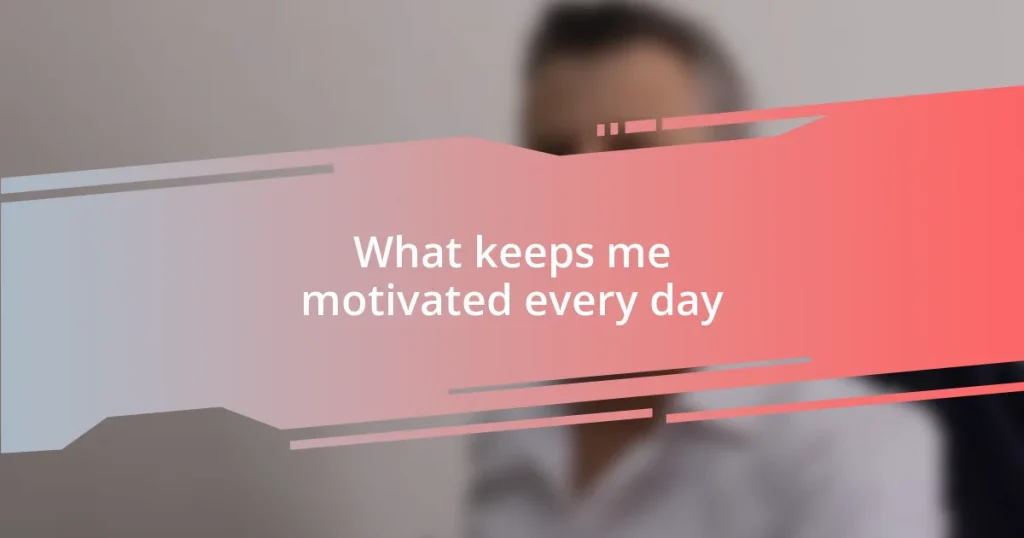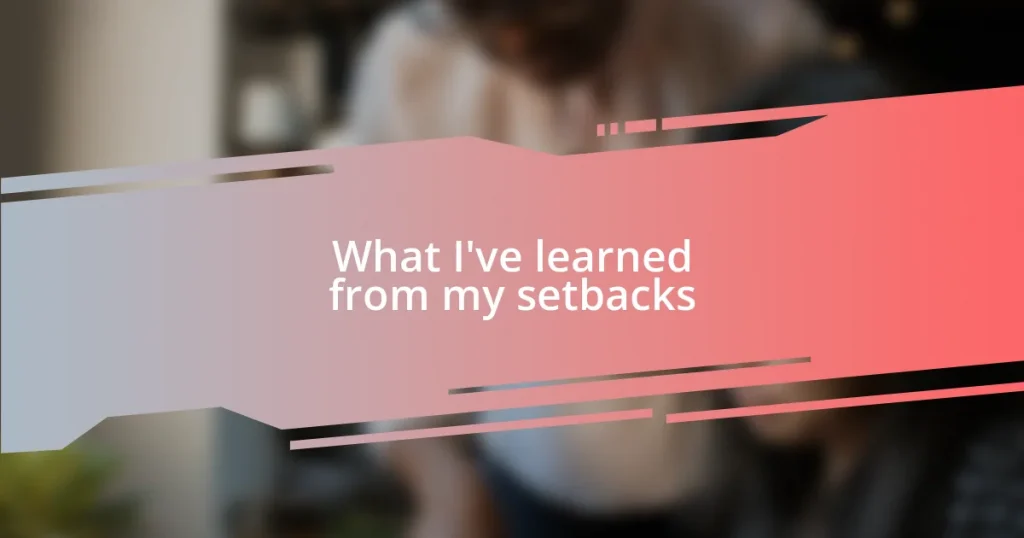Key takeaways:
- Complex Regional Pain Syndrome (CRPS) has distinct types and symptoms, impacting individuals’ lives differently and requiring understanding for empathy and support.
- Education for patients, healthcare providers, and the community is crucial for effective advocacy, diagnosis, and reducing stigma surrounding CRPS.
- Engaging with support groups and utilizing various educational resources fosters a sense of community and enhances understanding of CRPS coping strategies.
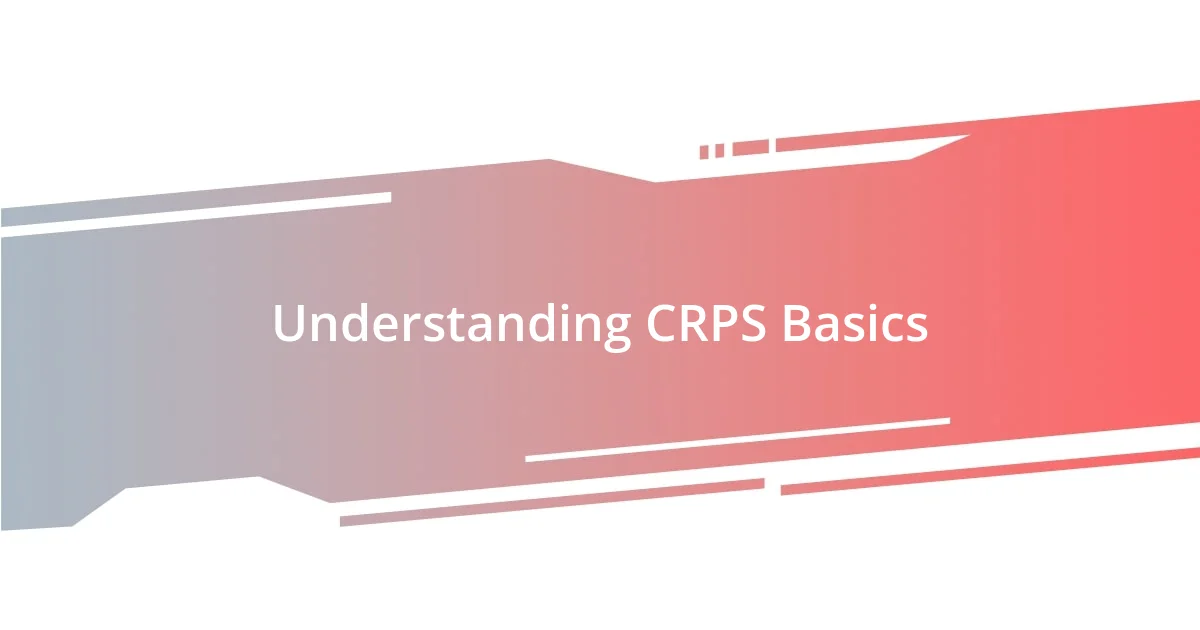
Understanding CRPS Basics
Complex Regional Pain Syndrome (CRPS) is a chronic pain condition often triggered by an injury, even a minor one, but it can become disproportionately severe. I remember feeling baffled when a friend sprained her ankle and, despite the initial healing, she developed burning pain and swelling that wouldn’t let up. It made me wonder: how can a seemingly small injury lead to such an intense experience?
What sets CRPS apart is its unique symptom profile, which can include changes in skin color, temperature, and swelling, often in the affected limb. This syndrome can feel isolating; I often think about how crucial it is for people to understand that the pain isn’t just “in their heads”—it’s a real, physiological response. Have you ever tried to explain your condition to someone who just didn’t get it? The frustration of trying to convey such a complex experience can be exhausting.
In addition, CRPS often involves two distinct types: Type 1, which occurs after an injury without nerve damage, and Type 2, which follows a distinct nerve injury. It struck me deeply when I learned that the prognosis can be as varied as the symptoms. Some individuals find relief, while others grapple with chronic pain that alters their lives entirely. Understanding these nuances is essential, as it fosters empathy and a better grasp of what those living with CRPS endure daily.
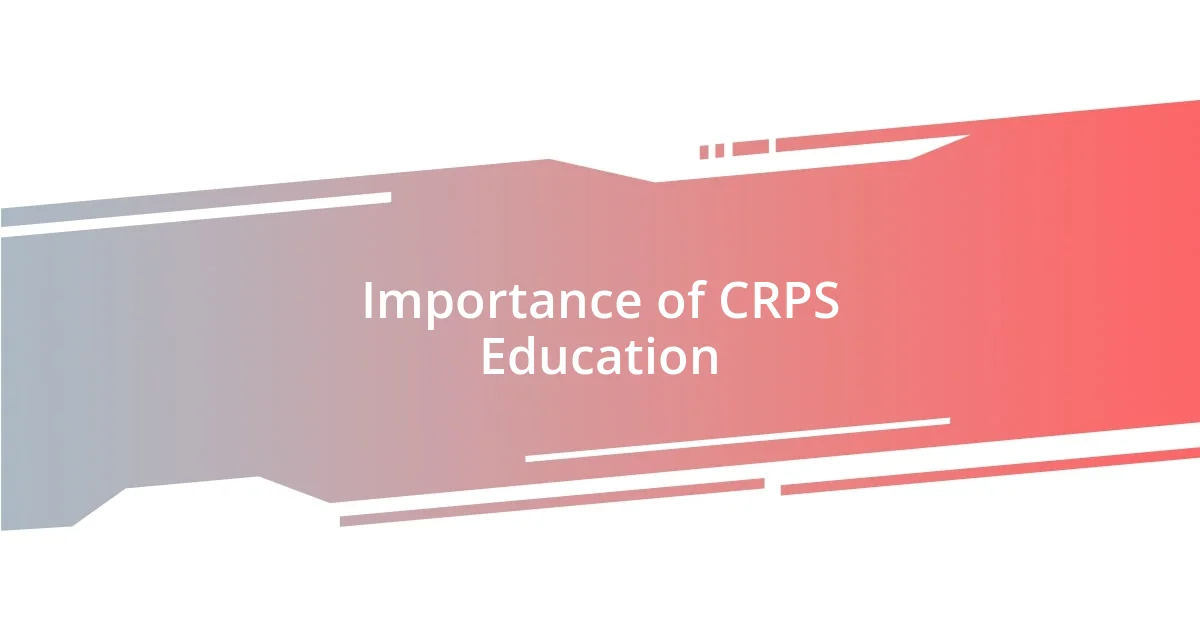
Importance of CRPS Education
Understanding the importance of CRPS education is critical for both patients and caregivers. From my perspective, when people are educated about this complex condition, it empowers them to advocate for themselves, seek appropriate treatments, and connect with others who share similar experiences. I recall a time when I attended a support group where an attendee mentioned how learning about CRPS helped her explain her situation to coworkers. Suddenly, she felt more understood and supported at work, changing her daily interactions significantly.
Moreover, educating healthcare professionals about CRPS is equally vital. I’ve seen firsthand how a lack of understanding can lead to misdiagnosis or ineffective treatment plans. During a visit to a pain specialist, I observed other patients struggling to communicate their symptoms because medical jargon was thrown around without context. When providers are better equipped with knowledge about CRPS, it enhances patient care and fosters a more compassionate healthcare environment.
Lastly, I believe community awareness campaigns can make a considerable difference. When the broader public is informed, it can reduce stigma and build a more supportive environment for those affected by CRPS. For instance, a friend of mine participated in a local event promoting awareness about CRPS. It was heartening to see diverse participants actively engaging, learning, and even offering to help support affected individuals. These interactions remind us all that education can bridge gaps and nurture understanding.
| Aspect | Importance of CRPS Education |
|---|---|
| Patients | Empower them to advocate for proper treatment and support. |
| Healthcare Providers | Improves diagnosis, treatment plans, and patient care. |
| Community Awareness | Reduces stigma and fosters a compassionate environment. |
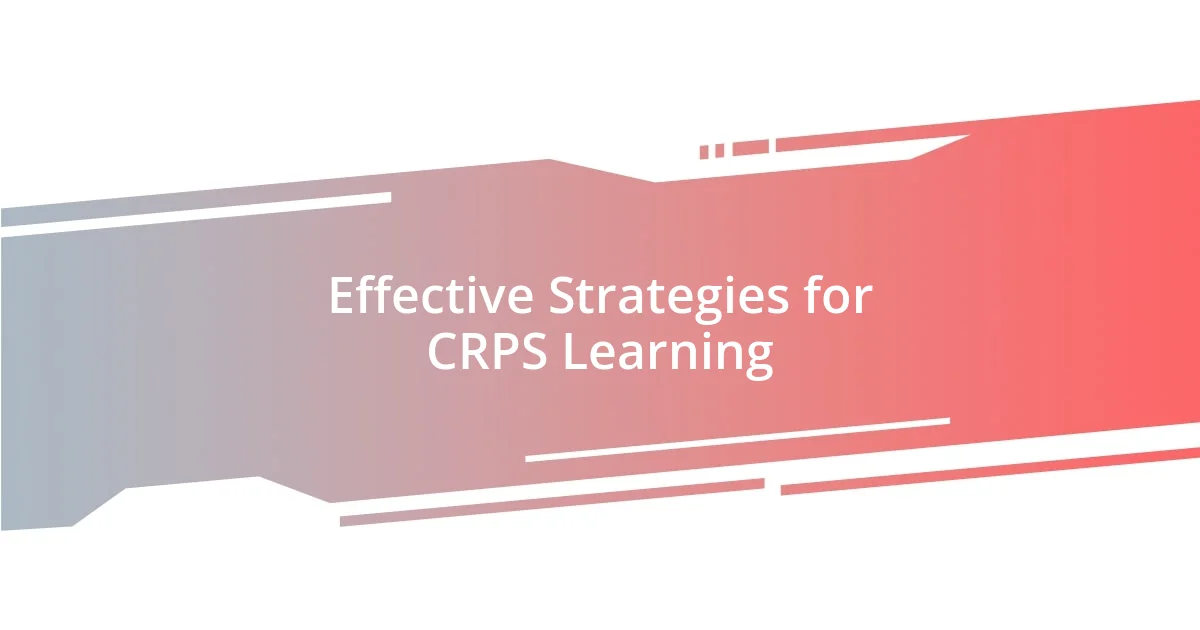
Effective Strategies for CRPS Learning
Effective learning about Complex Regional Pain Syndrome (CRPS) requires a multi-faceted approach. Personally, I’ve found that immersing oneself in various resources, such as books, online forums, and workshops, can enhance understanding. For example, I attended a webinar hosted by a leading pain specialist, and the insights gained from patient stories and scientific explanations opened my eyes to the complexities of the condition. Each piece adds a layer of knowledge that makes the experience of CRPS feel a little less isolating.
Here are some effective strategies I believe can deepen CRPS learning:
- Join support groups: Engaging with others who understand the daily challenges can foster a sense of community and shared experience.
- Leverage multimedia resources: Watching documentaries or listening to podcasts about CRPS can provide diverse perspectives on the condition.
- Participate in workshops: Hands-on learning opportunities can help clarify treatment options and coping mechanisms.
- Read credible literature: Articles from reputable sources help build a foundation of understanding and reinforce the clinical aspects of CRPS.
Another effective strategy relates to open communication with healthcare providers. From my experience, I’ve learned that asking questions during appointments can make a significant difference. I remember once debating with my doctor about medication options after doing some research that demonstrated varying outcomes. This dialogue not only helped me feel more in control but also led to a tailored approach to my management plan. Keeping an open line of communication ensures that you receive the most effective care based on your unique experiences.
- Prepare questions prior to appointments: This ensures you cover all concerns and feel heard.
- Document your symptoms: Keeping a detailed log can help convey the nuances of your condition to healthcare providers.
- Seek second opinions: If you feel uncertain, consulting multiple experts can provide alternative approaches and perspectives.
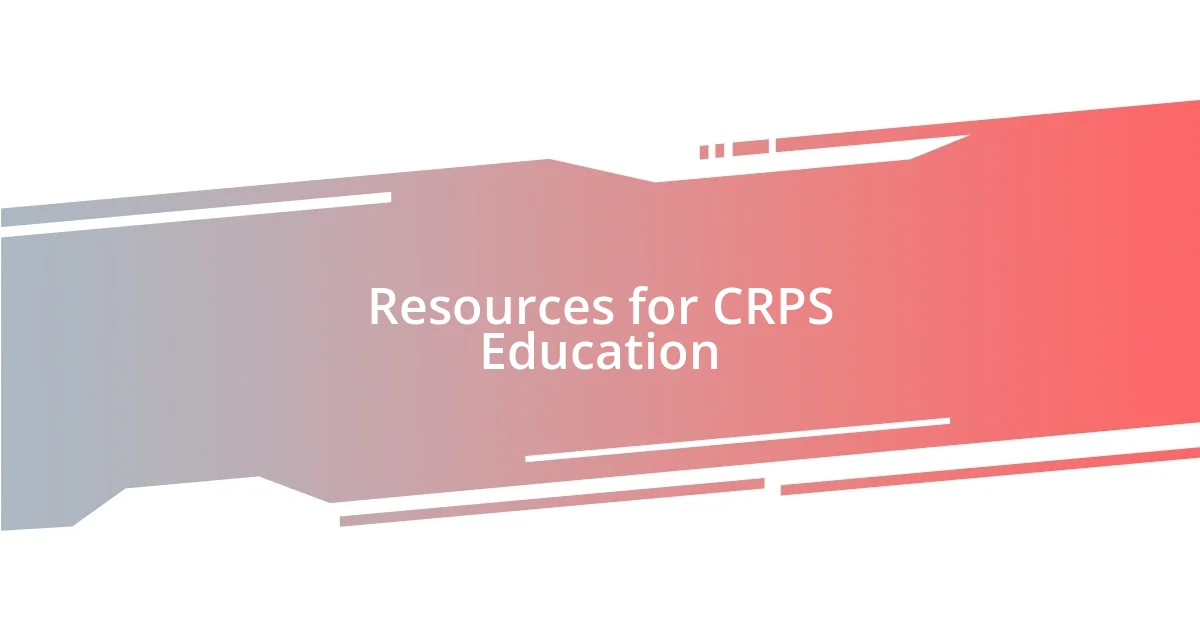
Resources for CRPS Education
When it comes to finding resources for CRPS education, I often recommend starting with reputable organizations dedicated to chronic pain and CRPS awareness, such as the Reflex Sympathetic Dystrophy Syndrome Association (RSDSA). I once stumbled upon their website after feeling overwhelmed by my condition, and it became a beacon of hope. The information provided there was not only comprehensive but also supportive, helping me to understand my symptoms and connect with others in similar situations.
Online forums and social media groups can also be invaluable. I vividly recall joining a Facebook group where members shared their day-to-day experiences living with CRPS. Reading about their triumphs and struggles offered me a sense of belonging that I didn’t realize I needed. It’s incredible how shared narratives can validate our own feelings, right? Such platforms create an informal yet powerful learning environment where questions are welcomed, and advice flows freely.
Don’t overlook local libraries or community centers, where workshops or seminars may be hosted on CRPS topics. I was fortunate enough to attend one such workshop organized by my local pain clinic. Not only did I gain valuable insights into coping strategies, but I also met a few individuals whose stories mirrored my own. Building those connections in person gave me comfort amidst the complexities of my journey, demonstrating just how important it is to take every opportunity to learn and engage.
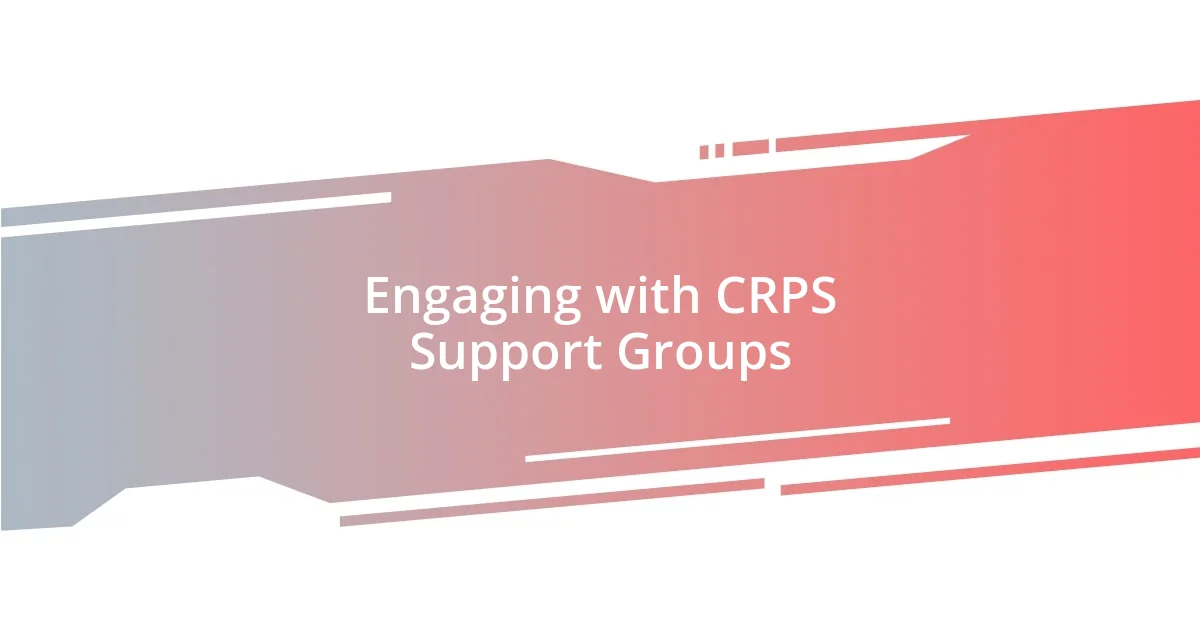
Engaging with CRPS Support Groups
Engaging with CRPS support groups can truly transform your experience with this challenging condition. I remember the first time I joined a local meet-up; the immediate sense of camaraderie was unlike anything I had felt before. It’s reassuring to see others face similar struggles, and sharing stories can lighten the emotional burden. Have you ever felt the weight of isolation lift, just from knowing you’re not alone?
I also found it helpful to participate in online support groups, where I could connect with individuals across the globe. One night, as I poured my heart out about a particularly tough day, I was met with an outpouring of encouragement and advice from people who really understood. It made me realize that these virtual spaces are more than just forums; they serve as lifelines where empathy and understanding thrive. Isn’t it amazing how a few kind words from someone who truly gets it can make all the difference?
Finally, these groups often host workshops that can lead to fantastic learning opportunities. I recall attending a session on pain management techniques, which not only provided practical tools but also sparked meaningful discussions about personal experiences. This exchange of information can be invaluable, especially when the insights shared resonate with your own journey. Have you explored what support networks might be available in your area? There’s a community waiting to help you navigate the often murky waters of CRPS together.
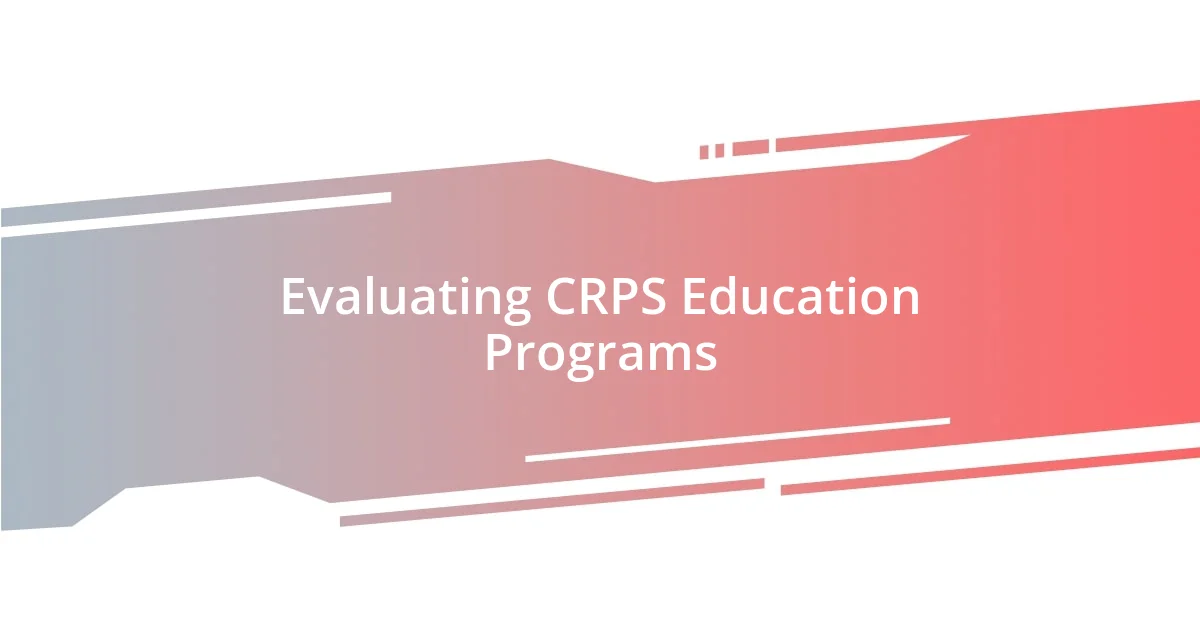
Evaluating CRPS Education Programs
Evaluating CRPS education programs requires a keen eye for how well they address individual needs. I once attended a seminar that promised to cover various aspects of CRPS, but much of the content felt too generalized. I left feeling disappointed; had they taken the time to assess the audience’s specific challenges, the experience could have been much more impactful. Wouldn’t you want a program tailored to your unique journey?
Another essential aspect to consider is the qualifications of the educators involved. In my experience, having instructors who have firsthand experience with CRPS made a world of difference. I still remember hearing a speaker who had battled the condition for years; their insights felt relatable and authentic, adding depth to the learning experience. Do you think the credentials of educators heighten the effectiveness of a program?
Finally, feedback from previous participants can provide invaluable insights into the program’s effectiveness. After attending a particularly engaging workshop, I canvassed the room, eager to hear others’ thoughts. I was heartened to find that many felt the same way—real-world applications and personal stories made the material resonate. It taught me that listening to fellow attendees can shape our understanding of what truly works in CRPS education. Have you ever relied on community input to guide your choices? It can be a game-changer.
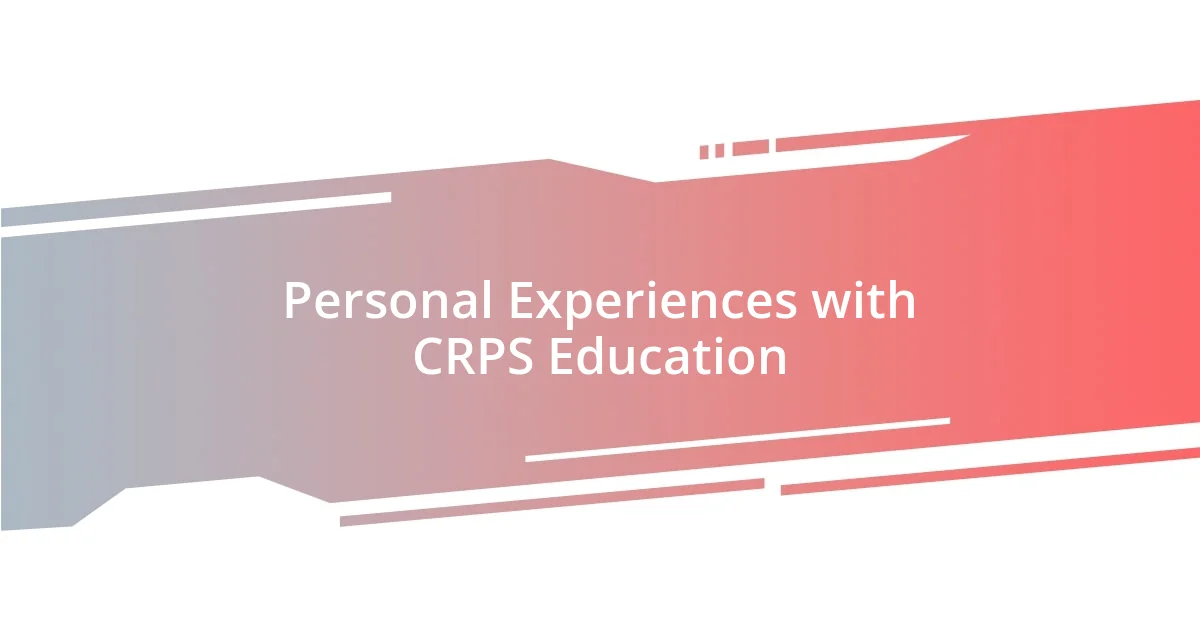
Personal Experiences with CRPS Education
Personal experiences can profoundly shape our understanding of CRPS education. I vividly recall a workshop I attended that focused solely on coping strategies, and it was like a light bulb went off for me. Someone in attendance shared a simple breathing exercise that has since become my go-to technique during flare-ups. Isn’t it fascinating how such small insights can lead to significant shifts in our approach to pain management?
I remember feeling overwhelmed during my first attempt to navigate a CRPS information session. The terminology tossed around seemed daunting, and I was lost in the sea of medical jargon. However, I took the brave step to ask questions, and those simple inquiries opened a floodgate of knowledge. Have you ever found that asking for clarification not only helps you but also encourages others to engage in deeper discussions? That experience taught me that curiosity can lead to shared learning.
Moreover, I’ve experienced the transformative power of education that connects personal narratives with clinical information. I attended a seminar where the speaker shared their life story, detailing how they managed to thrive despite CRPS. Their authenticity struck a chord with me, and it made the scientific information feel grounded and applicable. Don’t you think personal stories can bridge the gap between knowledge and real-life application? It certainly did for me, reminding me that we’re all navigating this journey together.


